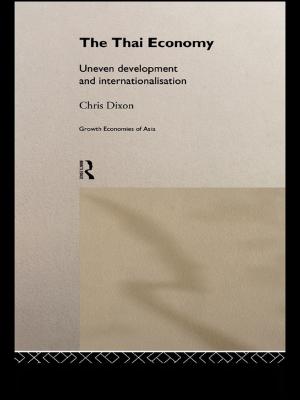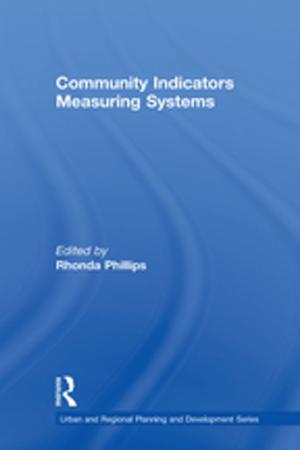Rice Plus
Widows and Economic Survival in Rural Cambodia
Nonfiction, Social & Cultural Studies, Social Science, Gender Studies, Women&, Sociology| Author: | Susan H. Lee | ISBN: | 9781135508951 |
| Publisher: | Taylor and Francis | Publication: | February 14, 2006 |
| Imprint: | Routledge | Language: | English |
| Author: | Susan H. Lee |
| ISBN: | 9781135508951 |
| Publisher: | Taylor and Francis |
| Publication: | February 14, 2006 |
| Imprint: | Routledge |
| Language: | English |
This book explores the economic coping practices of rural widows in the aftermath of the Cambodian civil war. War produces a preponderance of widows, often young widows with small children in their care. Rural widows must feed their families and educate their children despite rural poverty and the lack of opportunities for women. The economics of widowhood is therefore a significant social problem in less developed countries.
The widows' predominant economic plan was to combine rice cultivation with an assortment of microenterprises, a "rice plus" strategy. Many widows were unable to grow enough rice on their land to feed their families. They filled the hunger gap by raising cash through microenterprises to purchase additional rice. Gender work roles were both permeable and persistent, allowing a flexible sexual division of labor in the short run but maintaining traditional roles in the long run. Most widows called on relatives or exchanged transplanting labor for male plowing services, although a few women took up the plow themselves. The study also explores widows' access to key economic resources such as land, credit, and education.
War decimated widows' family support networks, including the loss of children, their social security. The study concludes that Cambodia's gender arrangement offered many economic options to widows but also devalued their labor in a cultural structure of inequality. Gender, poverty, and war interacted to reduce widows' financial resources, accounting for their economic vulnerability.
This book explores the economic coping practices of rural widows in the aftermath of the Cambodian civil war. War produces a preponderance of widows, often young widows with small children in their care. Rural widows must feed their families and educate their children despite rural poverty and the lack of opportunities for women. The economics of widowhood is therefore a significant social problem in less developed countries.
The widows' predominant economic plan was to combine rice cultivation with an assortment of microenterprises, a "rice plus" strategy. Many widows were unable to grow enough rice on their land to feed their families. They filled the hunger gap by raising cash through microenterprises to purchase additional rice. Gender work roles were both permeable and persistent, allowing a flexible sexual division of labor in the short run but maintaining traditional roles in the long run. Most widows called on relatives or exchanged transplanting labor for male plowing services, although a few women took up the plow themselves. The study also explores widows' access to key economic resources such as land, credit, and education.
War decimated widows' family support networks, including the loss of children, their social security. The study concludes that Cambodia's gender arrangement offered many economic options to widows but also devalued their labor in a cultural structure of inequality. Gender, poverty, and war interacted to reduce widows' financial resources, accounting for their economic vulnerability.















